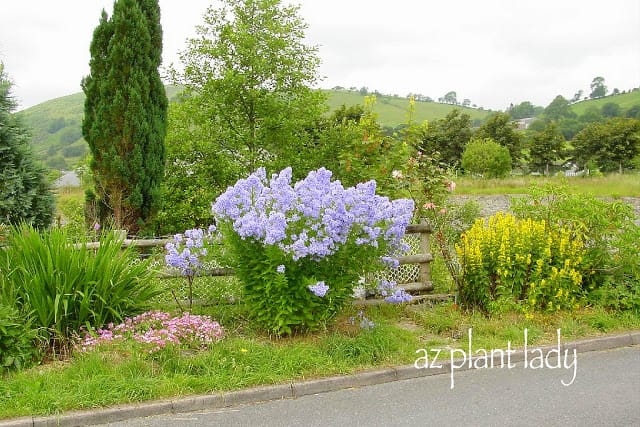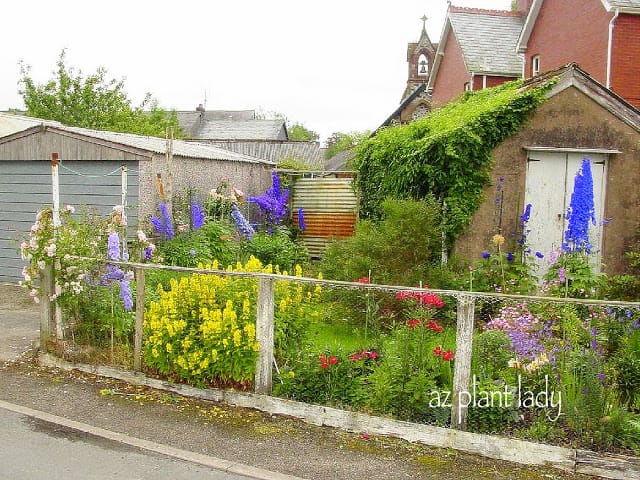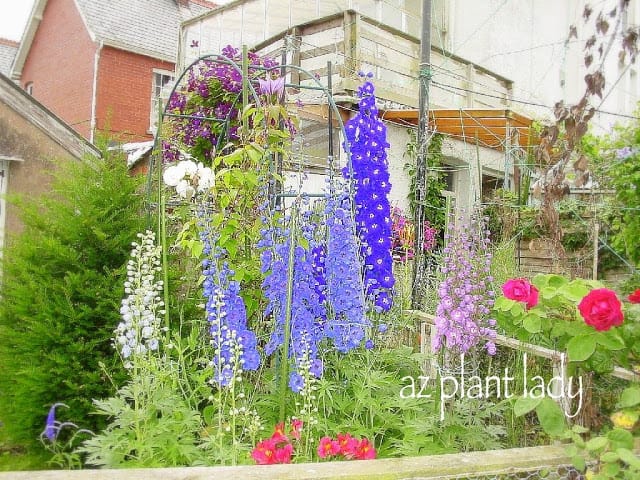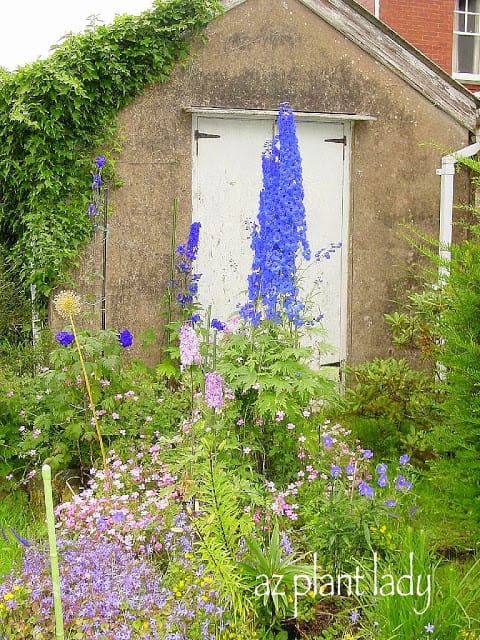I came upon a hidden garden while I was visiting a charming little town in Wales. Actually this town, Llantwrtyd Wells, (population 700), is the smallest town in Great Britain. I can’t pronounce the name correctly, my Gaelic is rather rusty – or I should say non-existent, but this tiny town is a special place to visit.

Our visit took place during the summer of 2003. We were walking down the road into this little town and enjoying the beautiful scenery, above.
As we drew near the center of town, we turned a corner and there it was….

….a hidden garden, sandwiched between a nondescript shed and garage.

Now, as most of you know by now, I almost always have my camera with me, ready to take photos of truly awful landscaping that I can use as examples of what not to do. But, I also love to take pictures of beautiful gardens and I was just entranced by this one. The delphiniums, the roses, and the clematis were so lovely.
I have a neighbor who grows beautiful delphiniums and yes, you can grow them in the desert.I tried growing Clematis years ago and it really never flowered for me, so it probably is not too successful in our climate.

Well, back to my story….I lingered around the garden taking my pictures and reluctantly left to explore more of the town.
Llanwrtyd Wells is a wonderful place to visit and I have many good memories, but three stand out the most:
1. Meeting the butcher who was the mayor of this tiny town who wanted to know if we were enjoying our stay and if we would tell our friends to come visit. (So if you go and visit, please tell the mayor, if you meet him, that I fulfilled my promise).
2. Going to the ‘Honesty Bookshop’ where you walk in, choose a used book and put the money for the book in the old-fashioned cash register – on the honor system. There was no sales clerk.
3. But, by far, my favorite memory was coming upon this beautiful, hidden garden.










